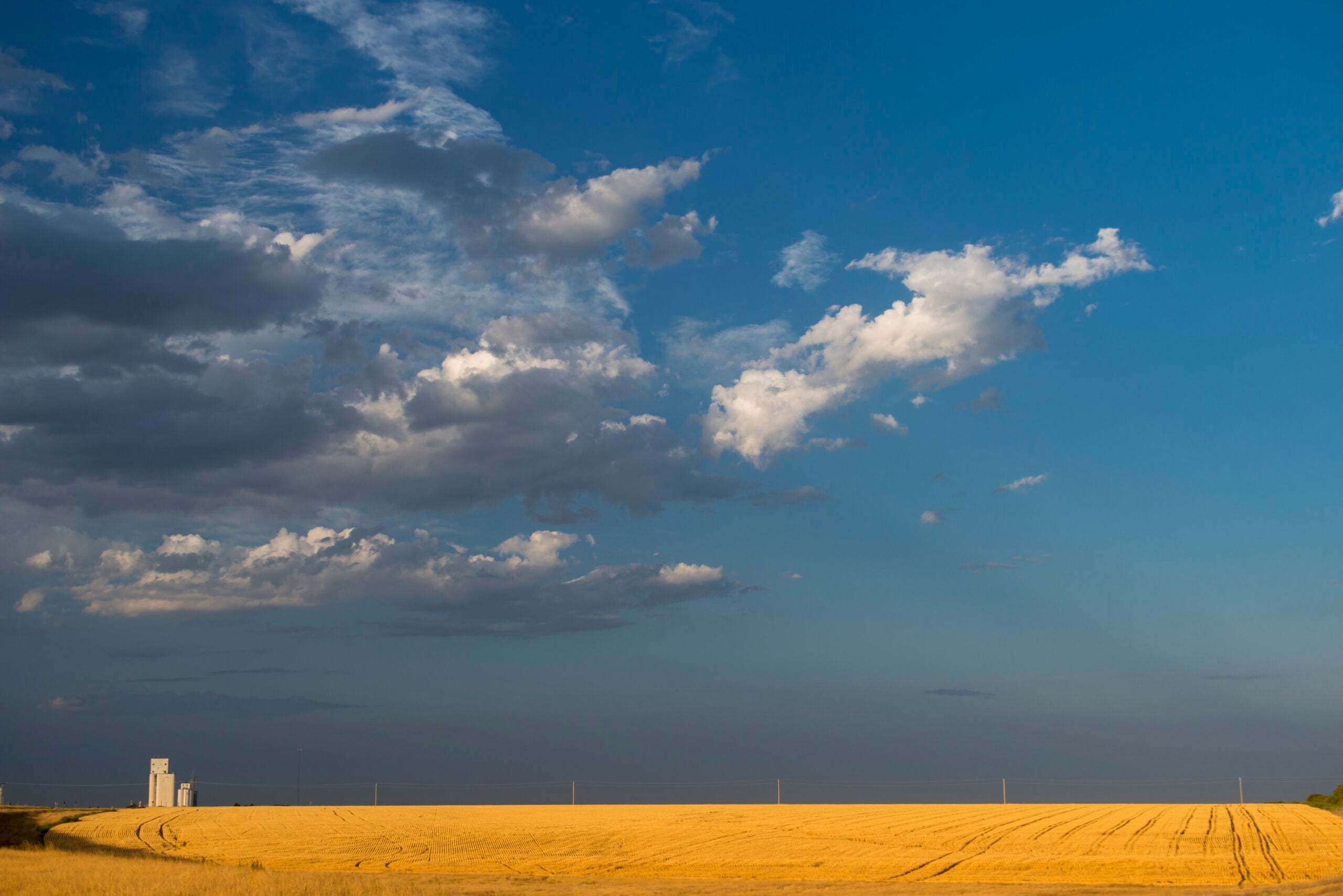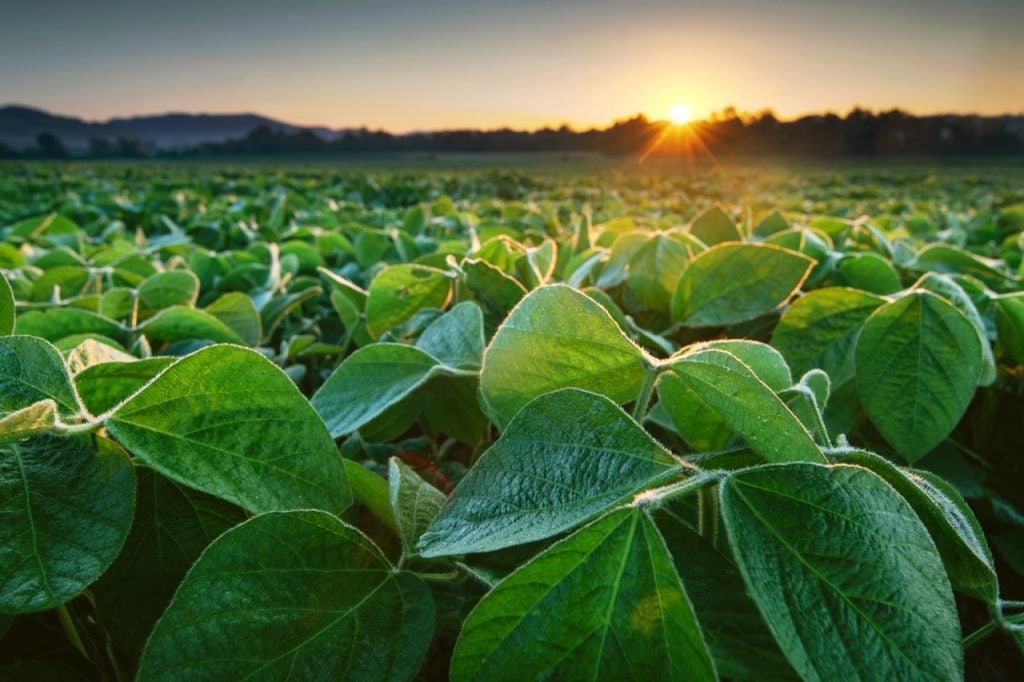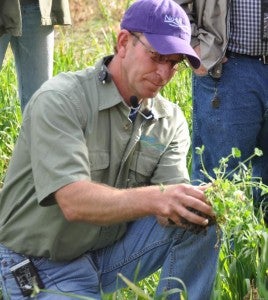During the summer of 2023, Kansas endured a historic heat wave with temperatures soaring above 110°F in some areas. As climate change continues to intensify, the frequency and severity of extreme heat are projected to increase. Are Kansas farmers at risk of losing money in the face of these extreme growing conditions? A new study by EDF, Kansas State University and Cornell University aimed to answer this question by examining the impacts of extreme heat over the last four decades.
Growing Returns
Selected tag(s): kansas
Increasing extreme heat is hurting Kansas farmers’ bottom line
Climate, agriculture, and finance: exploring connections at the Fed
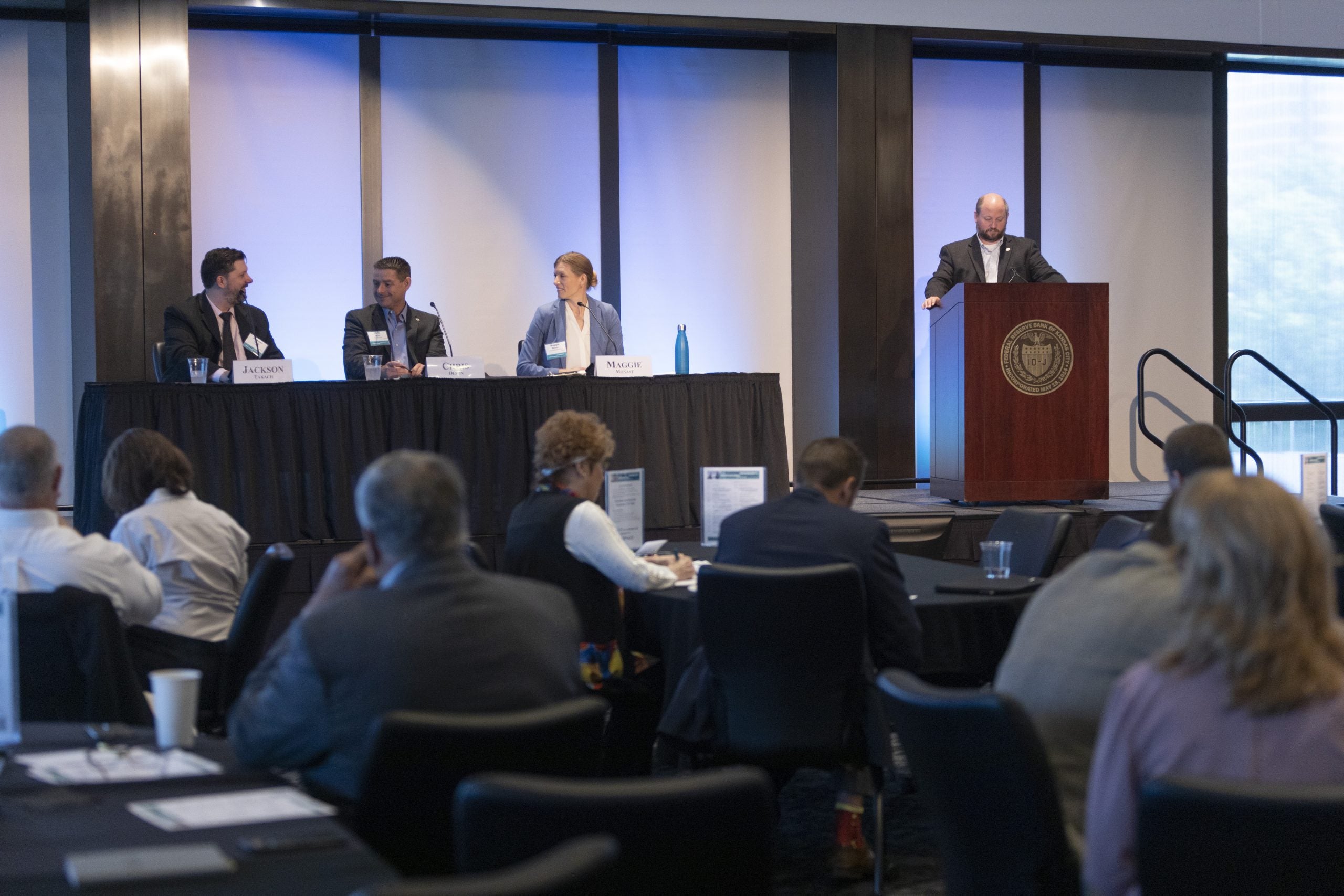
Maggie Monast as a panelist at the The Federal Reserve Bank of Kansas City’s 2023 Agricultural Symposium, “The Changing Geography of Agricultural Production.”
The Federal Reserve Bank of Kansas City’s 2023 Agricultural Symposium, “The Changing Geography of Agricultural Production,” explored the factors driving changes in where and how agricultural commodities are produced, disruptions that are leading to further geographical differences, and the role of investments and farm policy in the years ahead.
I had the honor of joining as a panelist with representatives from Farmer Mac and Rabo AgriFinance, where I shared EDF’s perspective on how climate change affects agricultural production and finance. Climate impacts on agriculture, from catastrophic weather events to temperature and rainfall variability, increase risks for farmers and their financial partners. This pattern of increasing disruption directly affects food availability, prices, and ultimately, what ends up on our plates. As one of my fellow panelists noted, “The one certainty in agriculture today is volatility.” Read More
How will climate change affect U.S. crop yields?
As the UN climate conference kicks off in Egypt, food and agriculture are central to negotiations for the first time. More severe droughts, warmer temperatures and heavier rainfall fueled by climate change are making it harder than ever for the world’s one billion farmers to grow food and fiber. While some farms and regions are more vulnerable than others, climate change will affect farmers everywhere.
Here in the U.S., where farmers have a long history of steadily increasing yields, climate change will likely cause crop productivity gains to stall — or even reverse — as soon as 2030.
Farmers open their books to show financial impact of conservation
Farm accountants have a lot more to offer than advice on how to maximize tax returns. In fact, they play a pivotal role in scaling conservation.
Environmental Defense Fund and K·Coe Isom AgKnowledge, a managerial accounting service for farmers and ranchers, teamed up with three Midwestern grain farmers to study how the adoption of conservation practices affects farm budgets.
These farmers, based in Iowa, Kansas, and Ohio, have all adopted some combination of no-till, crop rotations, cover crops and nutrient management. They were generous enough to open up their books so that AgKnowledge could analyze the financial impact of these conservation activities.
The full report will be out later this year, but initial results show how conservation can benefit farmers’ bottom lines. Here are three lessons we learned from this analysis. Read More
Conservation relies on profitability
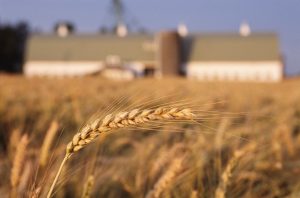 Whether in agriculture or any other business, if you don’t have enough money coming in to pay the bills, it’s hard to find the time or resources for anything other than working to turn a red budget spreadsheet black.
Whether in agriculture or any other business, if you don’t have enough money coming in to pay the bills, it’s hard to find the time or resources for anything other than working to turn a red budget spreadsheet black.
A wheat farmer friend from Washington recently told me that current prices are $4/bushel, the same as 40 years ago. Take into account inflation, and that’s a significant decline. Nationally, the USDA predicts that net farm income will drop by almost 9 percent this year, the fourth year in a row of declines after reaching a record high in 2013. Farmers also face enormous volatility in income, with fluctuations in yield, demand, as well as crop and input prices.
It’s no surprise then that environmentalists’ calls to cut crop insurance, disaster programs or other conservation payments fall on deaf ears in the agricultural community – or serve only to raise blood pressure levels across the Corn Belt. Read More
Why Kansas farmer Justin Knopf strives to emulate the native prairie
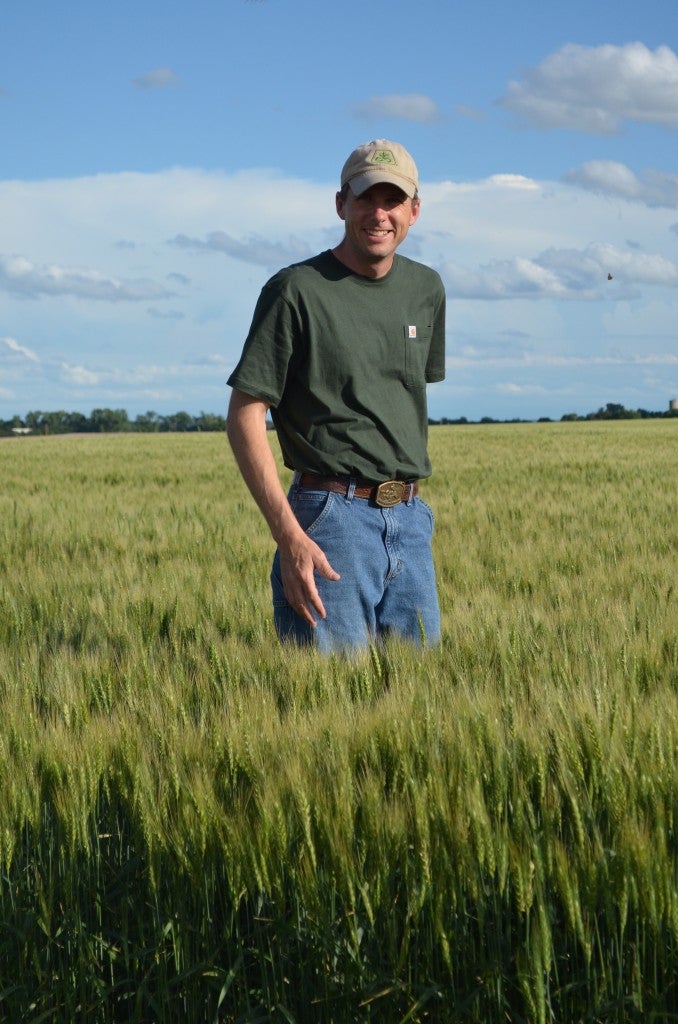 I first met Justin Knopf at a meeting in DC about five years ago. At 6’3”, he definitely stood out, but not just physically. He openly conveyed how important his family and his land are – the reason he cares so much about making sure his Kansas farming operation can live on is for his children. It’s rare to meet someone so articulate, sincere and committed to sustainability.
I first met Justin Knopf at a meeting in DC about five years ago. At 6’3”, he definitely stood out, but not just physically. He openly conveyed how important his family and his land are – the reason he cares so much about making sure his Kansas farming operation can live on is for his children. It’s rare to meet someone so articulate, sincere and committed to sustainability.
Over the years, I have become more and more impressed by Justin, who started farming at age 14 when his father gave him the means to rent land and buy seed and fertilizer.
Fast forward to today, and Justin is one of the country’s champions of no-till farming – a practice that has boosted his yields and made his crops more resilient to the effects of extreme weather. His dedication and success caught the attention of Miriam Horn, author of the new book Rancher, Farmer, Fisherman: Conservation Heroes of the American Heartland.
Rancher, Farmer, Fisherman tells the stories of five individuals in the enormous Mississippi River watershed (Justin included) who are embracing sustainability and defying stereotypes. I asked Justin about the book, his beliefs on sustainability and what’s next for no till. Read More
These heartland conservation heroes defy stereotypes
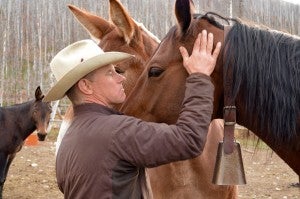
Montana rancher Dusty Crary with his horses.
Western ranchers, Midwestern commodity crop growers, fishermen who make their livelihoods along the Mississippi River and the Gulf Coast. In some circles, these folks wouldn’t necessarily be considered models of sustainability. And yet, many are leading a quiet revolution in the way our food is raised, harvested and produced.
In her new book Rancher Farmer Fisherman: Conservation Heroes of the Heartland, my colleague Miriam Horn journeys down the Mighty Mississippi River System to meet five representatives of this unsung stewardship movement: Read More
New guidebook explains how and why to build a farmer network
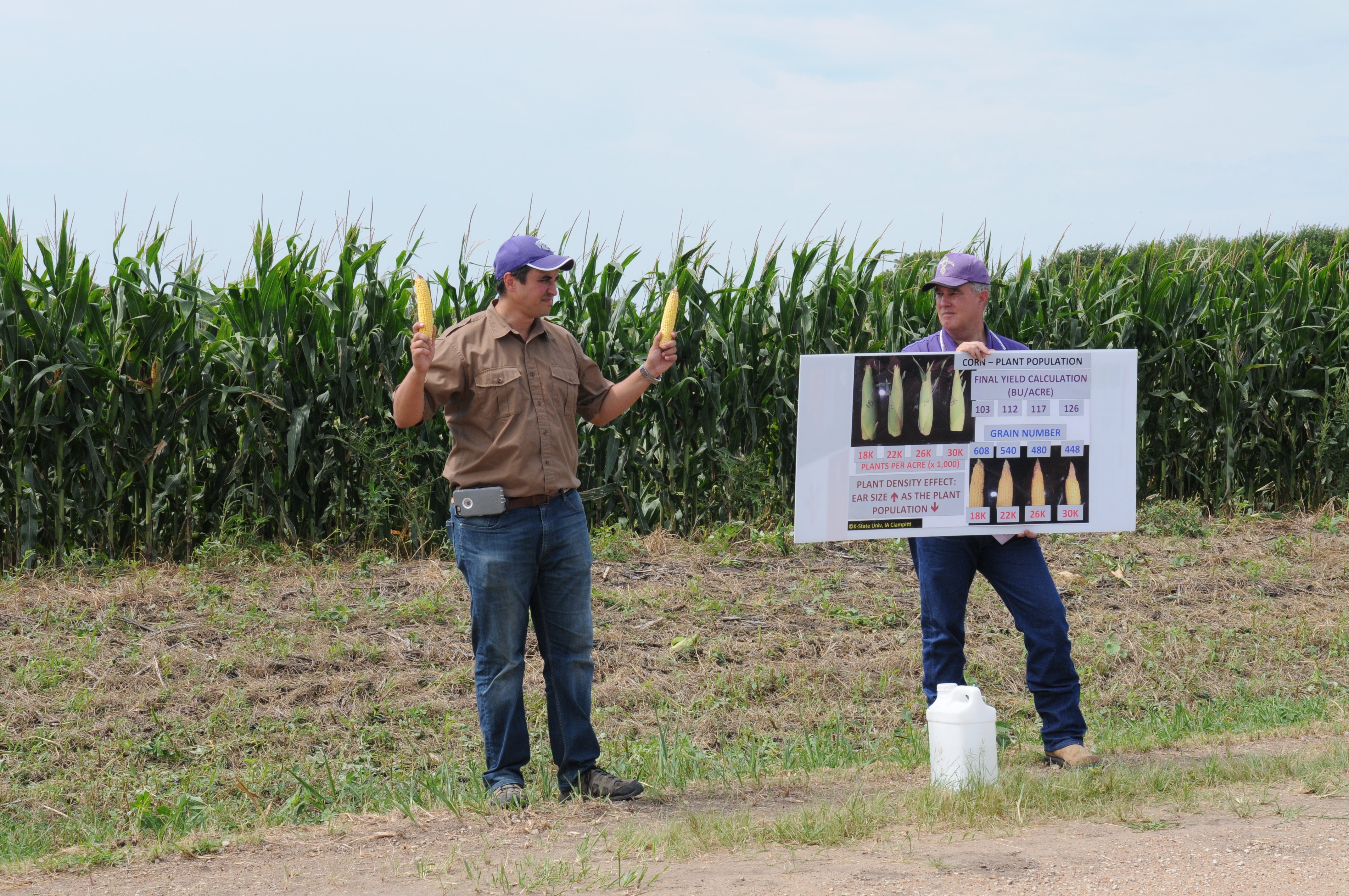 Amidst all the new tools and technologies being developed to make agriculture more sustainable, there is one tried and true method for testing on-site conservation practices that doesn’t get much attention: farmer networks.
Amidst all the new tools and technologies being developed to make agriculture more sustainable, there is one tried and true method for testing on-site conservation practices that doesn’t get much attention: farmer networks.
Farmer networks consist of growers within a region working directly with advisors, agronomists and/or scientists to conduct on-farm trials. These trials can test the economic and environmental impacts of changes in crop management, adoption of soil health practices, or use of precision agriculture tools. The data is then aggregated and analyzed to determine best practices for specific farm conditions and to inform future management decisions.
Originally established by the Iowa Soybean Association, the innovative farmer network model has since taken off, with Environmental Defense Fund and others establishing additional networks across the country. As University of Connecticut soil fertility expert Thomas Morris explains, participation in farmer networks has led to greater efficiency on hundreds of thousands of acres across the U.S – benefitting both the planet and yield. The potential for replication is limitless.
That’s why EDF created a how-to guide for other organizations, companies, and universities interested in creating a farmer network. The new Farmer Network Design Manual provides a roadmap to support sustainable agriculture practices, increase farm profits, and build resiliency. Read More
Why one Kansas farmer is leading a soil health revolution
Soil health wasn’t always this sexy. The United Nations has named 2015 the International Year of the Soils, the National Corn Growers Association created the Soil Health Partnership, and the Telegraph newspaper is claiming that we can only ignore the soil crisis for so long, and that “just a handspan of topsoil lies between us and oblivion.”
But Kansas farmer Gail Fuller has been at the forefront of soil health measures since the early 1980s. Just last month, he hosted the fourth annual “Fuller Field School,” a soil health workshop that was attended by growers from across the globe.
I asked Gail, who operates a diversified 1,000 acre farm in Emporia, Kansas, to tell me why soil health is so important for our food system, and why other growers should get on board. Read More










